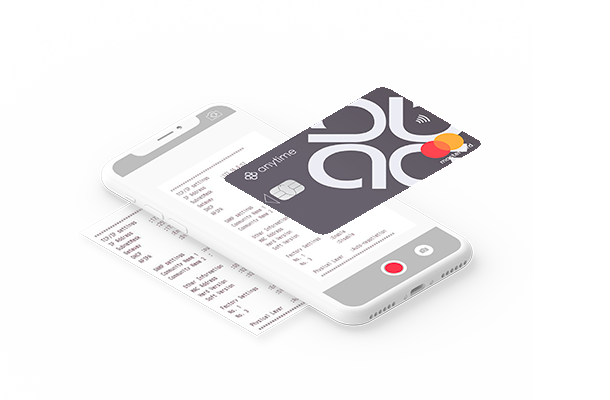When traveling on business, we often hear about mileage allowances. This flat-rate reimbursement scheme covers the costs incurred by an employee who has to travel for business reasons. However, there are a number of conditions to qualify. Find out everything you need to know about mileage reimbursement.

When do mileage allowances apply?
Both employees and company directors are entitled to reimbursement of expenses incurred when using their personal vehicle for business travel.
In principle, compensation is only possible if the vehicle used belongs to the employee, his or her spouse or a member of his or her tax household. However, there are 2 exceptions to this rule: + the employee rents a vehicle of his or her own to make the trip; + the employee uses a vehicle provided by the company, but for which he or she is responsible for all maintenance costs.
When carpooling with a work colleague, it is of course not possible to combine mileage reimbursements. In principle, only the person using his or her vehicle will be reimbursed, even if expenses are shared.
What do they cover?
What are mileage allowances?
Kilometric allowances are not only intended to cover fuel expenses, but all the costs inherent in the use of a vehicle: + maintenance + wear and tear on tires and the vehicle as a whole + car insurance.
Additional travel expenses such as tolls and parking are not covered by the mileage allowance. These two items of expenditure must therefore be covered by an additional expense claim in order to be reimbursed.
Which routes are concerned?
Mileage reimbursements cover expenses incurred for travel between the employee's usual place of work and the location of the assignment. They do not cover the distance between the employee's home and the company.
However, if the applicant is obliged to use his or her vehicle to go to work, and can justify this, the journey between home and work may be covered. This is particularly the case if the applicant lives in a rural area where public transport is poorly developed.
How does expense reimbursement work?
Presentation of supporting documents
Even though this is a flat-rate reimbursement method, it is still essential to present certain supporting documents if you hope to obtain reimbursement: + the reason for the trip + the date + the departure and arrival addresses and the distance in kilometers + a copy of the vehicle's registration certificate (carte grise) to attest to its tax rating.
Tip: to find out how far you've travelled, you can use route planner websites. Some even let you enter the amount of your mileage allowance and do all the calculations for you.
Compensation scale
Each year, the tax authorities draw up a scale of mileage allowances. This sets out the minimum amount that the company must pay the employee, depending on the type of vehicle and the number of kilometers driven.
These are compensation ceilings that are not subject to social security contributions. The company is free to set higher compensation amounts. The scale established by the tax authorities is designed to enable you to clearly identify the use of the vehicles concerned.
Kilometric allowances aren't just for cars!
Bicycle mileage reimbursement
If you like to cycle to work, since 2016 you've had the opportunity to receive mileage allowances. To date, this "IK vélo" allowance is not compulsory for employers, who can therefore decide for themselves whether or not to set it up.
Whatever the type of bike, whether electric or not, the allowance scale is the same for everyone, i.e. €0.25/kilometer for 2018.
The bicycle IK has the advantage of being valid for home-to-work journeys if you can justify the need to use it to get to your company, for example after taking public transport.
This allowance is exempt from social security contributions up to a limit of €200 per year per employee. It can also be combined with a public transport allowance.
Reimbursement of mileage expenses for carpooling
While no compensation solution has yet been put in place for employees who commute by carpool, there's no doubt that the situation is tending to change. In fact, since the beginning of 2018 and the entry into force of the Energy Transition Law, companies with more than 100 employees located in urban areas have been obliged to set up mobility plans aimed at encouraging alternative modes of transport, including carpooling. To date, therefore, expenses can be shared, but not allowances.
Managing mileage expenses may seem straightforward, but it remains a tedious and time-consuming task, both for the employee making the claim and for the accounting department, which is responsible for checking and correcting everything. Implementing a simple, reliable solution for managing expense claims, such as the Anytime pro package, is the key to saving time on a daily basis.








